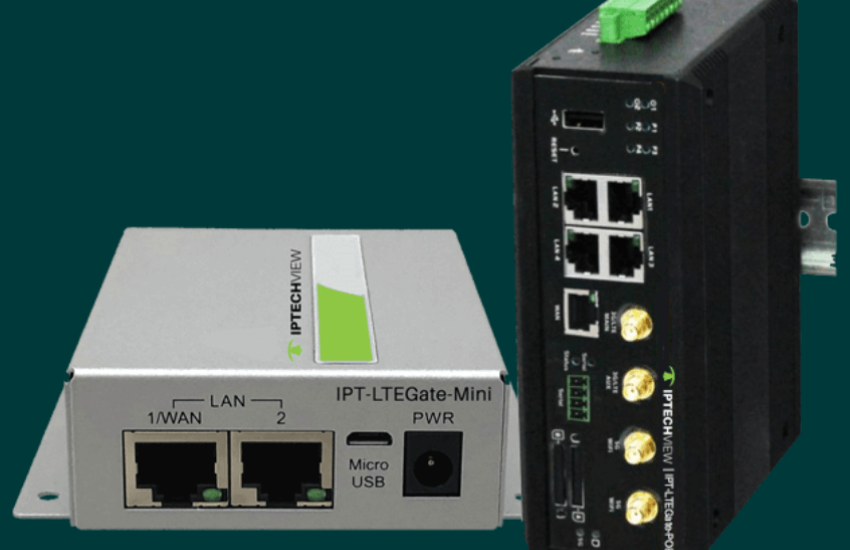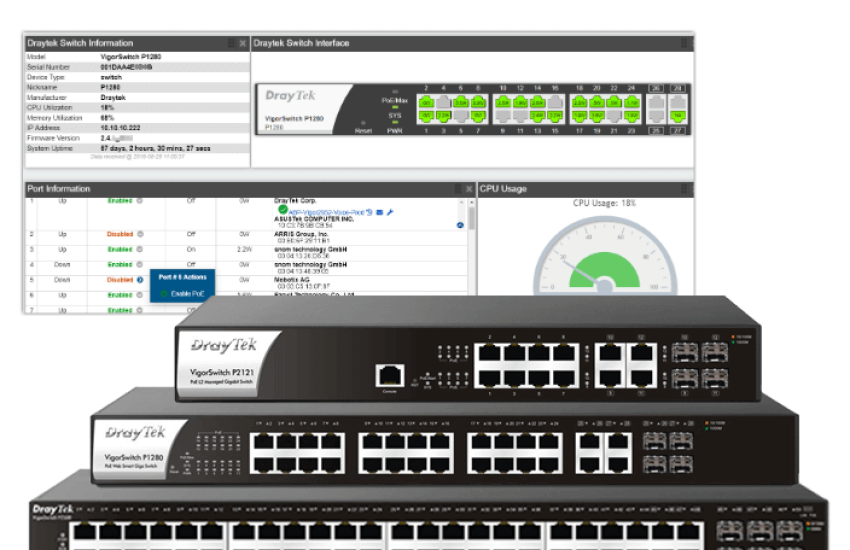Network Infrastructure: What It Is and Why It Matters
Network Infrastructure: What It Is and Why It Matters
Any growing organization deals with lots of data transferring and communications. In the modern world, direct meetings don’t always suffice. As such, we are leaning towards network infrastructure as time goes on.
Network infrastructure is a system or structure that includes all the software and hardware associated with the communications of users and devices and the network connection. It can be wired or wireless, depending on the authorities’ preference.
Network infrastructure is a crucial thing to consider when opening any small or big company nowadays. So, let’s introduce it to you in full detail in this article.
Components of Network Infrastructure
A network infrastructure consists of many basic to critical components. Some of them are as follows-
Access Points
The access point is essential to a wired network infrastructure, especially if it doesn’t want to deal with expensive wires and cables. Instead of connecting the different wireless devices to the cables, they connect them to the access points installed within the system.
There are three types of access points out there-
- The Cloud Access Point: It is an access point where all the wireless devices connect to a cloud server owned by the organization. Its primary advantages are high speed and uninterrupted data transfer. The authorities can also manage it with ease.
- On-Premise Access Point: The on-site access points are installed within the business premises. They are easy to customize to the people’s needs, unlike the cloud. It is also often the best option for ensuring higher privacy and security.
- Wi-Fi 6 Access Point: While most businesses are yet to shift to Wi-Fi 6 access point, it is a higher form than usual Wi-Fi. It can operate past applications with increased utilities while supporting and running modern applications that traditional access points can’t.
Controllers

A controller in a wireless network infrastructure is also known as a Wireless Local Area Network (WLAN) controller. It does as its name stands for, which is to control and manage the network connection of the devices throughout the company premises. Usually, you need an experienced architect to handle the installation and connectivity.
Switches
Have you ever noticed how the overall data transferring speed drops when so many devices are connected to the same network? Well, the same also happens on the network infrastructure of any business when the number of connected devices gets too many.
In such situations, the switches come to the rescue by separating different parts of the infrastructure into smaller blocks. So, when the network gets congested in one part, it doesn’t impact other groups. It is essential for big companies to run smoothly without having a drop in speed and productivity.
Switches are directly connected to the access points, especially for a wireless network. In such cases, the devices connect to the access point over the network, and then the data is transferred through the ethernet switches and cables to the other blocks of the infrastructure.
So, when the authorities upgrade the access point to support a rise in devices and data transfers, it must also include the switches. In doing so, it will be able to run and load the higher traffic that may follow. The case is especially relevant when it comes to shifting to Wi-Fi 6.
Routers
You are probably already familiar with routers. They are to keep the connection between different blocks separated by the switches in a network infrastructure. The edge routing platforms also do the same work.
A business with different premises spread throughout a large area or a university with various campuses may require both the routers and edge platforms to make a connection between them. It works with both on-site and cloud networks.
One can set up password protection or other security measures on routers and edge routing platforms to protect the data from unwanted access. Additionally, it also provides other services like-
- Software-defined Cloud Interconnect (SDCI) links.
- Multiprotocol Label Switching (MPLS) connection.
- Cellular or broadband internet choices.
- Finding the most effective, fastest, and best routes between different points.
A Wi-Fi router is a wireless router that you may find in many homes or smaller companies. It performs both as a wireless access point and a router, allowing users within a specific range to connect their devices to the network.
Cellular Gateways
Suppose any company wants to connect the cellular internet links for a WAN connection with a 4G or 5G speed. In that case, they may need to integrate a cellular gateway to the Ethernet ports of their routers or edge platforms.
Key Considerations in Network Infrastructure Design
When planning and installing a network infrastructure design in your company, you must consider various aspects to ensure it is actually up to the task. It must also be secure enough. Let’s go over some of these factors below-
Built-in Security Measures
Yes, most of today’s network infrastructures do utilize security measures, but they may not do it in an ideal way. The key point here is to let the security be integrated into different parts of the infrastructure during the designing phase. For example, just adding a password, two-step verification, etc., protections may not always suffice.
The infrastructure must also separate its different parts to keep all areas unaffected should one fall. For example, if the employee part is totally segmented from the customer part, then in the event of a data breach, the latter will still keep everything in the former secure.
If you think about it, the different blocks created by the switches are also a security measure per se. It is best to discuss with a professional what other security ideas you can implement in your business infrastructure to protect your valuable business information.
A Resilient Network
Technically, network resilience also falls within the built-in security sector. However, we differentiated it mainly because it also protects the network infrastructure from threats, such as natural disasters, blackouts, and misconfigurations, alongside targeted attacks.
If your company has a resilient network, it will keep most operations running at least to an okay level should any such issues come. As a built-in security measure, it must also be planned before starting your network infrastructure installation.
One common method for network resilience is to keep backups when the original data gets accidentally deleted or corrupted. Another way is to keep separate routes organized by your IT department to retain the data transfer if the main routes fail.
Usage of the Same Hardware and Software
When you implement an entire network infrastructure in your business premises, you need to think about the supportability of different hardware and software. They are what the whole system consists of, so their incompatibility with each other will mean slower productivity.
Choosing devices from the same brand and software from the same developers will make it way better and faster. It is because they will obviously be compatible if they come from the same company. It is a significant factor to consider, considering how much it may influence the overall speed and quality of the network infrastructure.
Impact of Network Infrastructure on Businesses
Network infrastructures are mandatory for businesses in today’s world. They help the company in various ways. For example-
Improved Communication: Simply talking over the phone from a distance won’t do, as all you can do is convey things to the other party through voices. If you genuinely want a high-speed data transferring system, including video, audio, files, and additional information, you will need a reliable and secure connection from a network infrastructure.
Efficiency: Many say that information is wealth. Once your business has a network infrastructure, all its functions and operations will be done with much less cost and time. For instance, you won’t have to send informants or get your clients to your site to see any product live if the process can be done simply on a video call. It also enables your customers to interact with your shopping center easily without coming to your store in person.
Business Collaborations: Making business deals, contracts, decisions, and other formal cases has never been easier with a network infrastructure. It can connect multiple businesses to the same network while still keeping each one’s information away from the others. Moreover, it allows for smooth cooperation while transporting goods to the clients or from one business fraction to another.
Infrastructure: Network infrastructures also made it easier to open new sections and subsidiaries of a company in a different state or nation without worrying about communication. As such, businesses can expand themselves steadily.
Enhanced Data Management and Accessibility

Managing a large amount of data transfer and connections between devices, users, the internet, etc., is impossible nowadays without a fully functional network infrastructure. Companies that utilize a work-from-home custom must need it in order to engage with the rest of the workers and other authorities in the company from anywhere.
Network Infrastructures also enable international businesses to integrate their different sections and subsidiaries. As such, any worker from anywhere can access the data required by the company while limiting access from unwanted access and securing the premises from malicious intent.
Modern network infrastructures also enable faster connections with more data management to prevent traffic congestion and ensure smooth transfers. It is unimaginable to think of a business rising in today’s world or keeping up with its competitors without network infrastructure on its premises.
Case Studies and Real-World Examples
Throughout the last few decades, many popular businesses worldwide have started to embrace network infrastructure systems to their full glory. Some of them utilized this to elevate their business to a new height. For example-
Apple Inc.
Apple, the cutting-edge tech company, started utilizing network infrastructure in its operation. A case study by the Harvard Business Review shows that the company partners with many foreign nations in Asia to handle the manufacturing and materials of their gadgets. Yes, Apple outsources the hardware from these companies.
Meanwhile, they tackle the innovation, design, and management parts themselves. As such, Apple managed to keep its businesses steady and allowed it to rise exponentially. Now, it wouldn’t be possible to collaborate with all those Asian manufacturers without their network infrastructure.
Zara
You may have wondered how Zara, the leading fashion company, can come up with trendy products so quicker than any other. Well, guess what? It was all thanks to the ‘Hub-and-Spoke,’ their own network infrastructure. It allows the company to keep its production of clothing and other products within only some closely linked suppliers and producers.
So, they didn’t have to outsource anything like Apple Inc. Since they keep the whole process in-house, it doesn’t take them long to lead the trend market.
Conclusion
Whether you already own a business or are planning to start one, it is imperative that you begin strategizing its network infrastructure. It can help you improve and expand your whole operation without taking too many risks. Moreover, due to the customizable nature of these structures, you can implement your business strategy into them, as many world-leading companies have.


